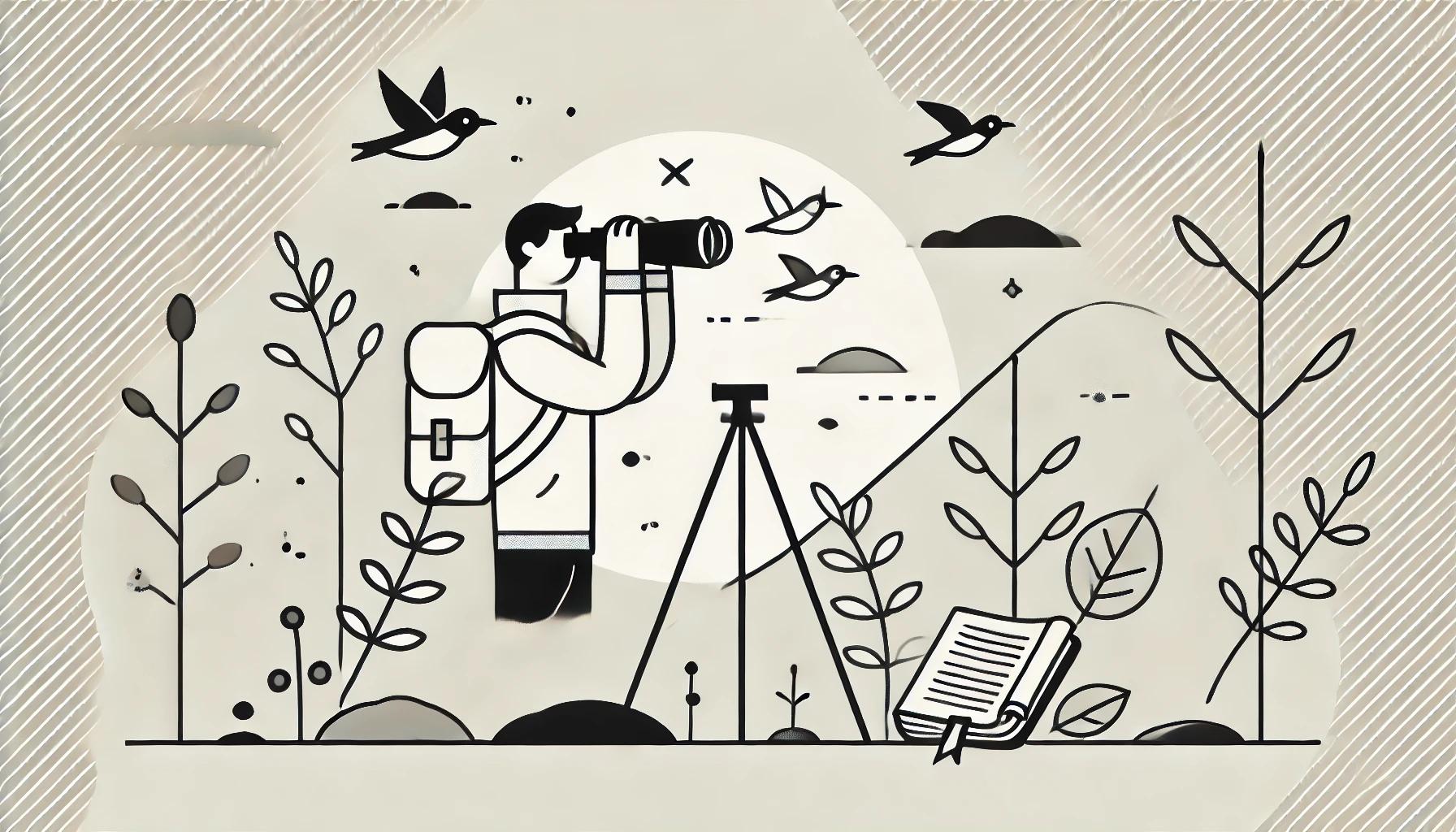Birdwatching, or birding, is a fascinating and rewarding hobby that connects you with nature and enhances your appreciation for wildlife. Whether you’re a novice or looking to deepen your knowledge, this guide will help you get started in the world of ornithology.
The Benefits of Birdwatching
Birdwatching offers numerous advantages:
- Connection with Nature: Birdwatching allows you to spend time outdoors, fostering a deeper connection with the natural world.
- Relaxation: The peaceful activity of observing birds can reduce stress and promote mindfulness.
- Educational: Birdwatching enhances your knowledge of bird species, behaviors, and habitats.
- Community: Birdwatching can be a social activity, connecting you with fellow birders and wildlife enthusiasts.
Getting Started
Essential Gear
Start with some basic gear to enhance your birdwatching experience:
- Binoculars: A good pair of binoculars is essential for observing birds from a distance. Look for binoculars with magnification between 8x and 10x.
- Field Guide: A field guide helps you identify bird species. Choose one specific to your region for more accurate information.
- Notebook and Pen: Keep a journal to record your observations, including species, locations, and behaviors.
- Camera: A camera with a good zoom lens can capture detailed images of birds, aiding in identification and documentation.
- Birding Apps: Use apps like Merlin Bird ID or eBird to identify birds and track your sightings.
Choosing Birdwatching Locations
Select locations that offer diverse bird habitats:
- Local Parks: Parks often have a variety of trees, shrubs, and water sources that attract different bird species.
- Nature Reserves: Protected areas are rich in biodiversity and provide excellent birdwatching opportunities.
- Backyard Birdwatching: Start in your own backyard by setting up bird feeders, bird baths, and nesting boxes to attract birds.
Understanding Bird Behavior
Learning about bird behavior can enhance your birdwatching experience:
- Feeding: Observe different feeding behaviors, such as pecking, probing, or catching insects mid-air.
- Nesting: Look for nesting sites and observe how birds build nests and care for their young.
- Migration: Learn about migratory patterns and the seasons when different species are likely to be seen in your area.
Birdwatching Techniques
Identifying Birds
Identifying birds involves observing key characteristics:
- Size and Shape: Note the bird’s overall size and shape, including the beak, wings, and tail.
- Color and Markings: Observe the bird’s plumage colors and any distinctive markings or patterns.
- Behavior: Pay attention to the bird’s movements, feeding habits, and vocalizations.
- Habitat: Consider the habitat where the bird is found, as different species prefer specific environments.
Using Binoculars
Proper use of binoculars can significantly enhance your birdwatching experience:
- Adjust the Binoculars: Set the eyepieces to match the distance between your eyes and focus on a distant object.
- Locate the Bird: Use your eyes to find the bird first, then bring the binoculars to your eyes without losing sight of the bird.
- Focus: Adjust the focus knob to get a clear and sharp view of the bird.
Recording Observations
Keeping a detailed record of your observations can help you track your progress and identify patterns:
- Date and Time: Note the date and time of your sightings.
- Location: Record the exact location, including any specific features of the habitat.
- Species: Identify the bird species and note any distinguishing characteristics.
- Behavior: Describe the bird’s behavior, such as feeding, nesting, or interacting with other birds.
Joining the Birdwatching Community
Local Birding Groups
Join local birding groups or clubs to connect with other birdwatchers:
- Birdwatching Tours: Participate in guided birdwatching tours led by experienced birders.
- Workshops and Classes: Attend workshops and classes to learn more about bird identification and conservation.
Online Communities
Engage with online birdwatching communities for support and information:
- Forums and Social Media: Join forums and social media groups dedicated to birdwatching.
- Citizen Science Projects: Contribute to citizen science projects by sharing your observations on platforms like eBird.
Tips for Successful Birdwatching
Be Patient and Quiet
Birdwatching requires patience and quiet observation:
- Stay Still: Remain as still as possible to avoid startling birds.
- Move Slowly: If you need to move, do so slowly and quietly.
- Listen: Pay attention to bird calls and songs, which can help you locate and identify birds.
Respect Wildlife and Habitats
Respect birds and their habitats to ensure a positive impact on the environment:
- Keep Distance: Observe birds from a distance to avoid disturbing them.
- Leave No Trace: Follow the principles of “Leave No Trace” by not littering and staying on designated trails.
- Support Conservation: Support bird conservation efforts by donating to organizations and participating in habitat restoration projects.
Conclusion
Birdwatching is a rewarding hobby that offers a deeper connection with nature and a wealth of knowledge about the avian world. By starting with the right gear, learning basic techniques, and joining the birdwatching community, you can enhance your birdwatching experience and develop a lifelong passion for ornithology. So grab your binoculars, head outdoors, and start exploring the wonderful world of birds. Happy birdwatching!

Leave a Reply